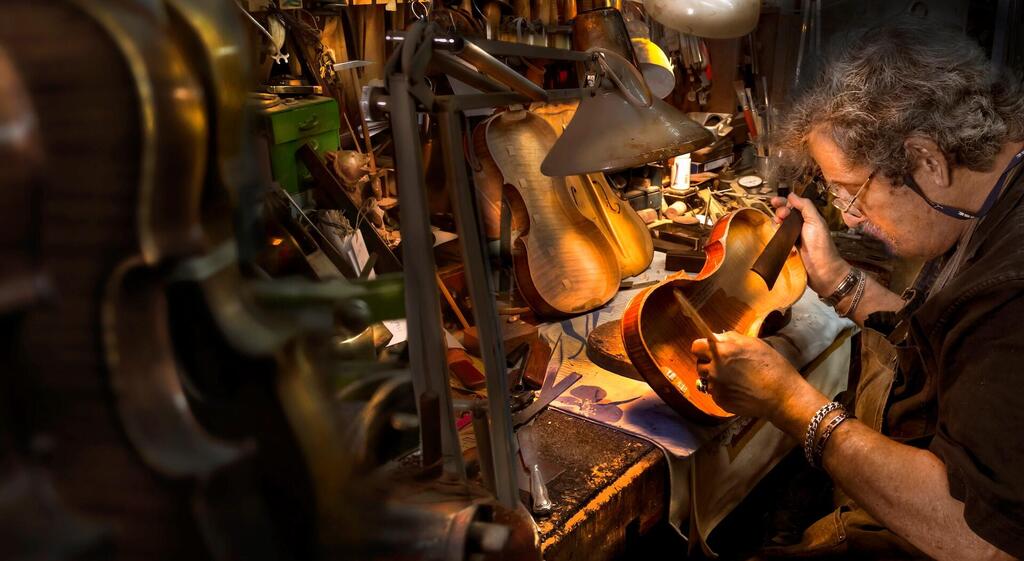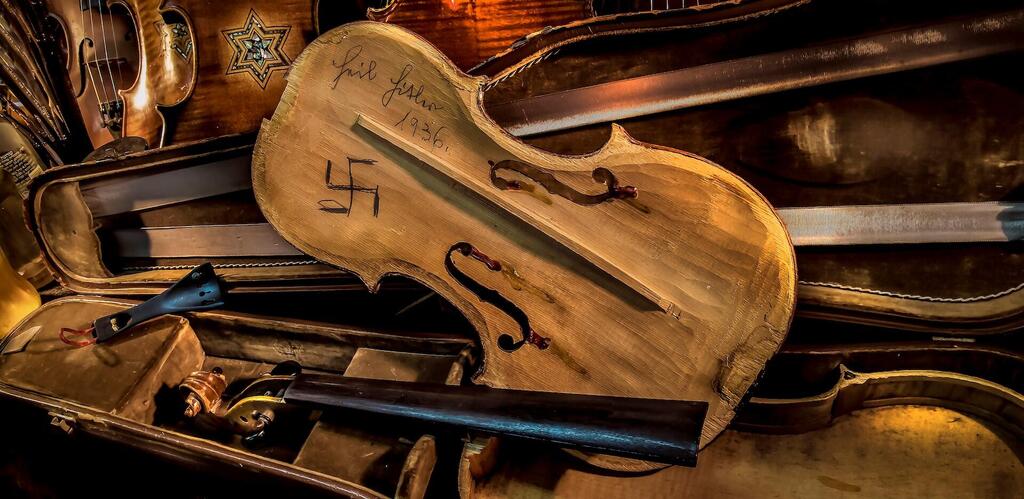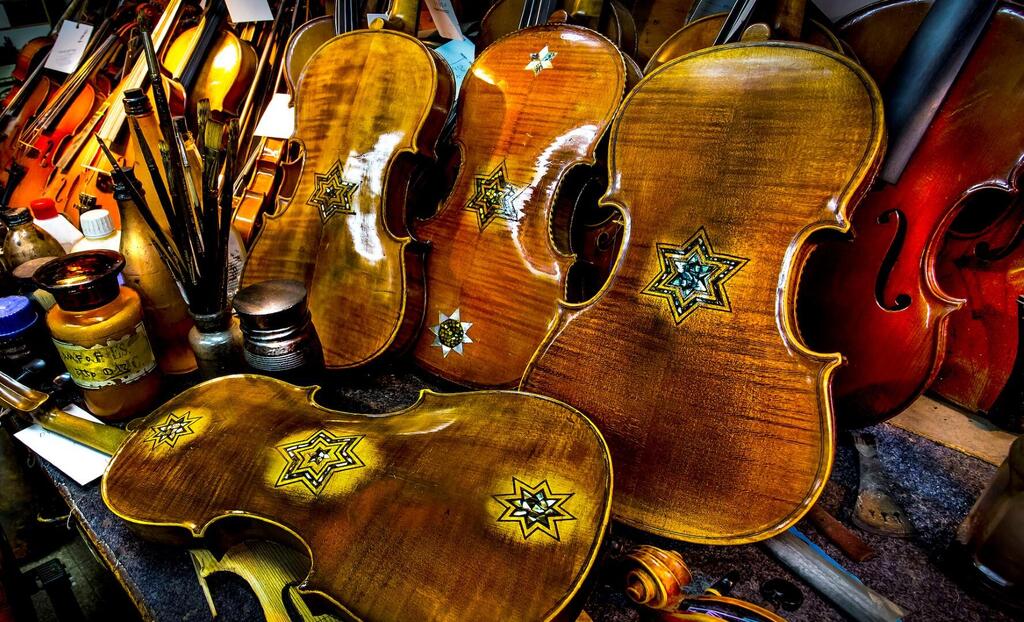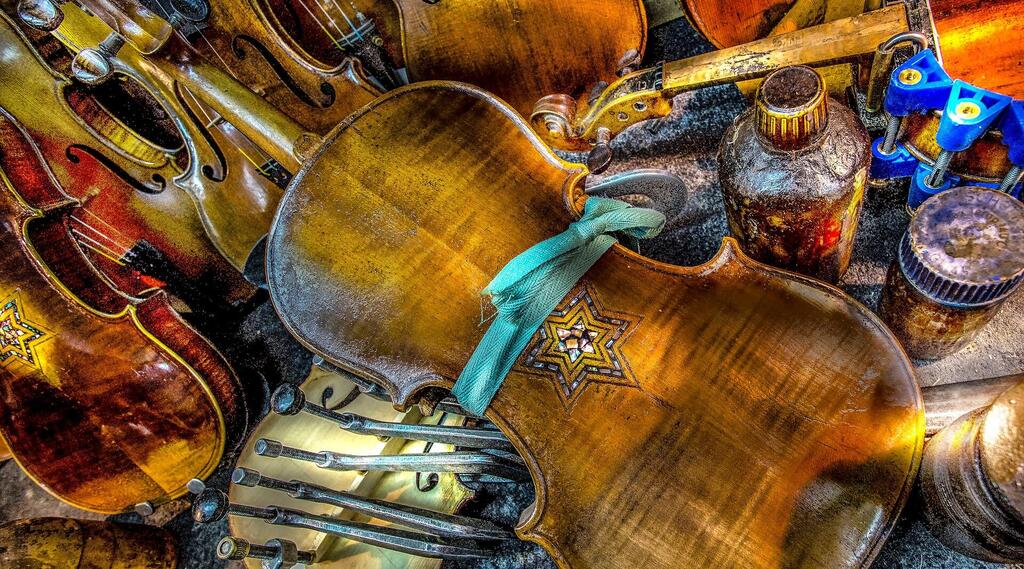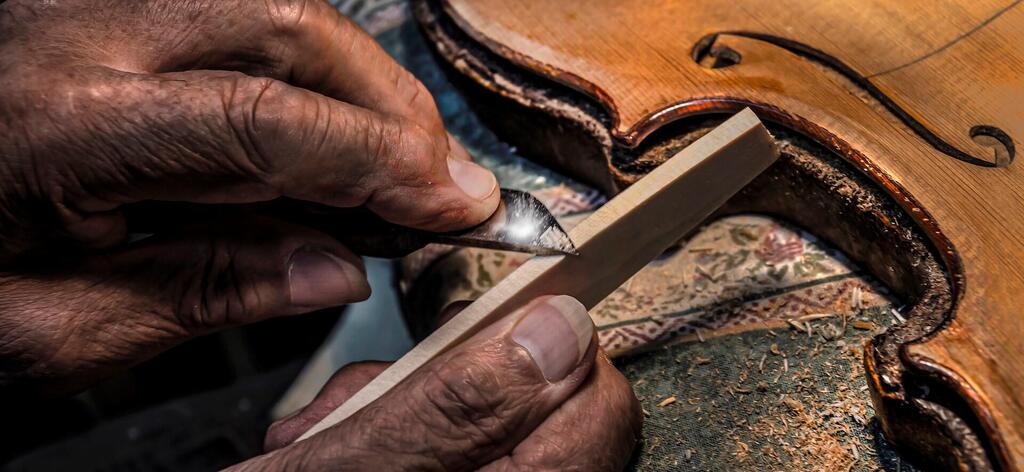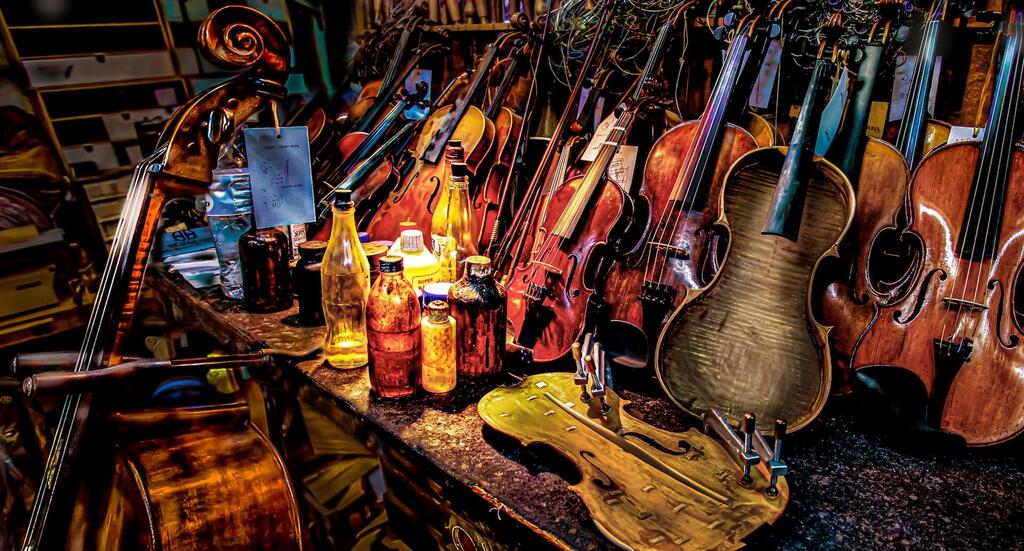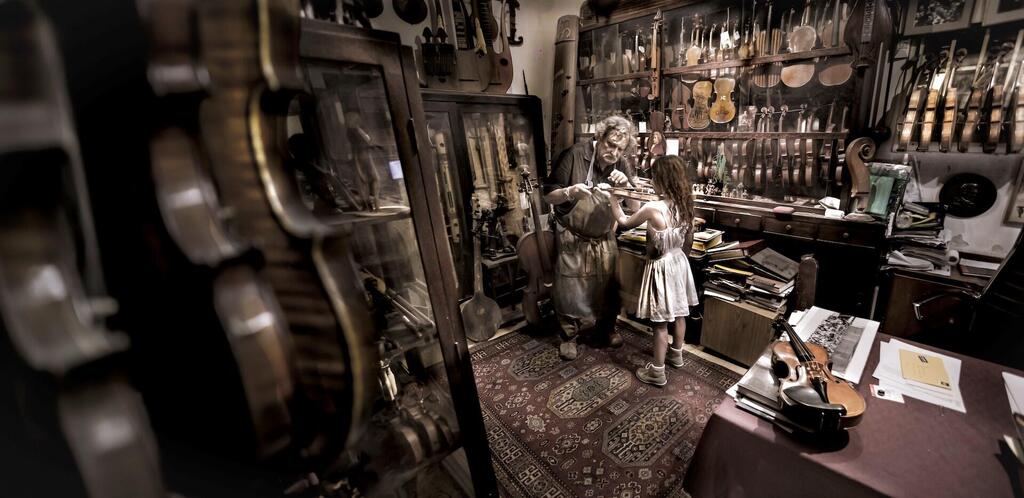Getting your Trinity Audio player ready...
Amnon Weinstein, a respected luthier who passed away on March 4, dedicated his life to the restoration of violins that once belonged to Jews who perished in the Holocaust. These instruments, bearing the scars of their history in concentration camps and ghettos, were meticulously restored by Weinstein with immense compassion. His mission was to breathe new life into these violins, enabling them to echo with their melodies in concert halls around the world.
Read more:
Israeli photographer Miki Koren documented Weinstein's extraordinary work in an exhibit that will soon be showcased at the PHOTO IS:RAEL International Photography Festival, under the aptly chosen title Unsilenced Violin.
One of Koren's photographs features a violin that will never be restored or played again, due to the engraving of a swastika and the inscription "Heil Hitler" on its interior, crudely etched by a German luthier. Weinstein chose not to restore this violin, wanting it to serve as a potent symbol of the extent of German hatred toward Jews and Jewish culture.
Koren recalls one particular night when he was summoned by Weinstein. "It was a rainy winter's night. Amnon called me and said I had to rush to the studio," he says. "When I arrived, Amnon, pale as a ghost, opened the door. He presented me with an old leather case containing the violin with the Nazi engravings. We spent that night pondering how to photograph such a discovery."
Koren explains that this violin changed many hands before they met a tragic end in the Holocaust. "Musicians survived the Holocaust because they never stopped playing. This violin was subject to Nazi abuse, but it carried an exceptionally charged emotional burden, given Amnon's family history and anyone else from that era," Koren notes.
The ultimate response to the Nazis
Weinstein was a second-generation of Israeli violin makers. His father Moshe immigrated to Israel and established a violin workshop in Tel Aviv in 1939. Amnon, an accomplished viola and trumpet player, carried on this tradition, which was later passed on to his son, Absalom, thereby preserving the tradition in the family's next generation.
Weinstein, having lost extended family members in the Holocaust, sought out violins of Jews who had brought their instruments to Nazi concentration camps. Some of these violins, mostly modest instruments used for celebratory music, bore a Star of David on their back.
Weinstein aimed to repair these violins, so they could be played in a symphony concert marking the 60th anniversary of the State of Israel. The poignant concert, entitled Violins of Hope, took place on September 24, 2008, featuring soloist Shlomo Mintz performing with the Ra'anana Symphonette and the Istanbul Orchestra.
Weinstein conceived the idea of locating and restoring violins after delivering a lecture entitled Violins in the Holocaust Era in Germany during the 1990s. Some of these violins had been brought from Europe to Israel by violinists, while others had been appropriated by the Germans. The remaining violins, found in ghettos, forests and concentration camps, were simple and inexpensive, and they were discovered in an almost completely destroyed condition. An extensive and lengthy restoration process was necessary to make them playable again.
Until his death last week, Weinstein preserved eight such violins in his workshop and continued his search for similar instruments around the world. The Violins of Hope project, involving both Amnon and his son Absalom, symbolized the triumph of the human spirit over hatred and evil. The restoration and resurrection of these string instruments' melodies served as a timeless testament to the failure of the Nazi's plan to annihilate the Jewish people and their culture.
The unique sound of the Jewish violinist
The outbreak of war in Israel on October 7 caught the team of PHOTO IS:RAEL and the Enav Cultural Center in the middle of the final preparations for the 11th International Photography Festival, initially scheduled to go underway in early November 2023. Despite the war not being over and the realization that its consequences would reverberate for a long while, the organizers decided it was time to proceed with the photography festival, paralleling the process of learning and adapting to the complex situation.
Scheduled to take place from March 27 through April 6 in Tel Aviv, the festival will feature dozens of free exhibitions from Israel and around the world, including several new exhibitions inspired by the war. Among these will be the photographic series capturing the violins that endured the Holocaust, embarked on a challenging journey and ultimately received Weinstein's devoted attention.
"About 40-50 years ago, I met Amnon's father and wanted to photograph the place he established. Decades passed, and with his father no longer alive, a bond was formed between me and Amnon. His dedication to the ancient violins fascinated me greatly, making the documentation of his work a truly gratifying experience for me," Koren explains, recounting his initial encounter with Amnon Weinstein.
Weinstein's workshop, nestled in a basement on King Solomon St. in Tel Aviv, doubles as a unique museum for ancient and special musical instruments, including violins that have survived the Holocaust. Each violin is accompanied by its own story, often supplemented by historical photos and documents, which Weinstein would narrate.
Weinstein believed that the sound of a Jewish violin was distinctly different from any other violin in the world. "There is a certain sadness to violins that Jews would play, almost weeping," Koren explains.
"Amnon always talked about [Yehudi] Menuhin - a violinist, violist and Jewish conductor - and how unique his playing is compared to other players in the world. We agreed that Jewish violinists have a different tone, a playing that is really an expression of sadness and weeping, and it is no coincidence that there is a connection between the events of the Holocaust and this. Even after Amnon restored violins, he said they continued to weep."
Koren shares that Weinstein revered the violins he repaired or built, as well as the raw materials he used. "I miss the conversations we had about musical instruments, about the connection to Jewish musicians and about his family's connection to the Holocaust," Koren concludes, "The conversations were poignant and moving. Now the opportunity has fallen into my hands that I have been waiting for, and I can present Amnon's work at the festival."
First published: 23:00, 03.13.24


